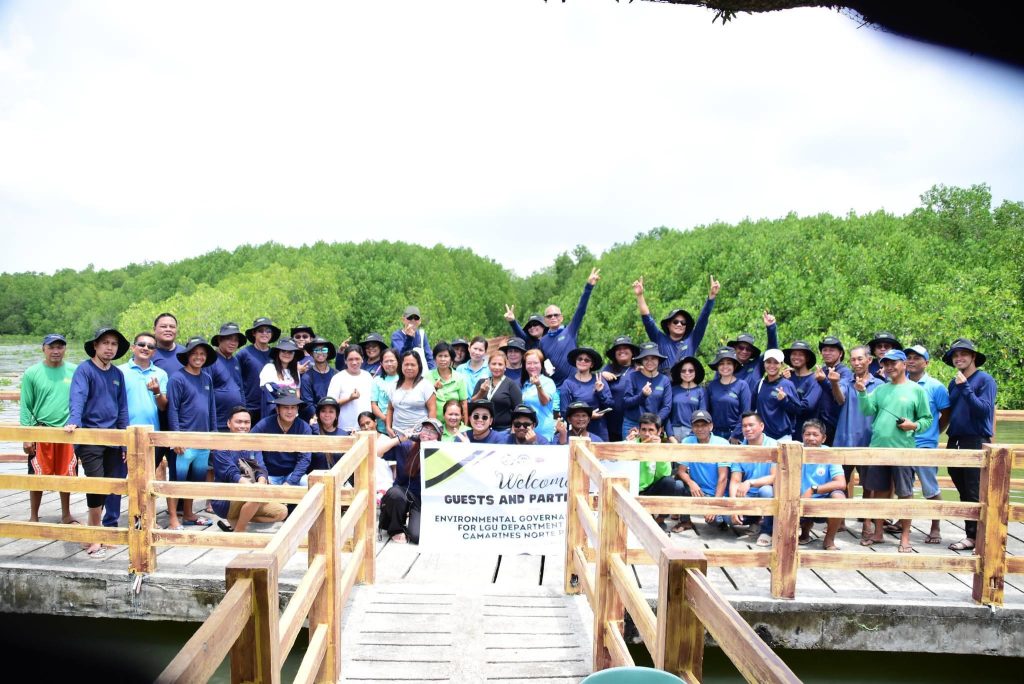Extension Services Division (ESD)
Know more about the CNSC Extension Services Division

About ESD
Welcome to the official webpage of the CNSC Extension Services Division!
Stay connected with us to get the latest updates on our programs, activities, and important announcements. We’re excited to share our journey with you!
Extension Services Updates
Brief History
Camarines Norte State College (CNSC) is the sole public higher education institution in Camarines Norte, was established on April 2, 1992, under R.A. 7352. Initially, extension services were not part of its structure, but during the first CNSC President’s term, an Extension Services Office was created, launching its first program, the Barangay Integrated Development Approach for Nutrition Improvement (BIDANI). Successive leaderships further developed extension services, introducing the Community Integrated Development Approach (CIDAP) and expanding initiatives such as Techno-Gabay, Gawad-Kalinga, and literacy programs. Collaboration with state universities, local government units, and organizations helped strengthen these efforts.
In 2012, the creation of the Office of the Vice President for Research and Extension marked a significant step in ensuring that extension initiatives were strategic and research-driven. Under the fifth CNSC President in 2017, the institution achieved ISO 9001:2015 certification, enhancing its quality management system for service delivery. With the appointment of the sixth president in 2021, CNSC is set to further advance extension activities through technology and innovation, focusing on research-based patents and entrepreneurial projects to improve the livelihoods of grassroots communities.
 
Vision, Mission, Goals and Objectives
VISION
Prominence in community services promoting economic and social transformation of the marginalized and vulnerable groups in the province.
MISSION
To develop an increasingly productive and self-sustained community living in harmony with the environment through acquired knowledge and skills in the fields of applied sciences, education, agri-fishery and industrial technologies.
GOALS
- Undertake relevant, multi-disciplinary and participatory extension programs and activities through teacher-students’ empowerment and community involvement;
- Promote knowledge and science-based technologies and environmental awareness to reach out to the community its services through education and information and technology dissemination;
- Establish field-trials and/or extension-cum research of generated technology (ies);
- Establish and strengthen partnerships and linkages with SUCs, LGUs, NGAs, Pos and NGOs in local, national and international level;
- Teamwork with the people in a community in the adaption/utilization and commercialization of generated/packaged technologies;
- Establish a training center in the province for Livelihood, Entrepreneurship, Management, Technology, Governance, Agriculture, Fisheries and Environment;
- Promote the creation of technopreneurs through the transfer and implementation of technology and research-based viable projects; and,
- Develop Extension/ Community-based Research Journal that would showcase the impact of extension activities to the lives of the community beneficiaries.
OBJECTIVES
- Conduct of research-based extension activities or other related activities that will boost the social and economic livelihood contributing to community empowerment for sustainable development;
- Establish new and strengthen matured technology that are research-based to clienteles, out of school youths (OSY) and other stakeholders;
- Provide technical advice and consultancy services on knowledge management, social marketing skills and the like; Establish local and international linkages and partnerships for collaborative extension programs;
- Update the University Logical Framework for Training and Extension from the planned activities of the delivery units;
- Use alternative method of conducting extension activities such as the use of digital training and promotion platforms; and,
- Develop and distribute advocacy or IEC materials to community partners and beneficiaries
Functions of the Extension Office
- Take the lead in formulating and initiating extension programs, projects and activities of the college and assist in the implementation process;
- Create policies enhancing the protection and welfare of all personnel involved in the conduct of extension activities and other extension-related policies;
- Provide leadership and direction for extension projects and activities of the College;
- Conduct in-service trainings, seminars/workshops, conferences, dialogues, consultancy and technical services and community involvement;
- Provide technical assistance and/or expert services to various stakeholders in the community;
- Promote the development of more techno-preneurs from the adopters of shared knowledge and research-based technology and viable projects;
- Establish partnerships and linkages with local and national government agencies, non-government agencies, international organizations, alumni, etc.;
- Take the lead in monitoring and evaluation activity of the continuing and on- going extension projects; and,
- Initiate the preparation of Extension Research Journal showcasing case studies, impact analysis and the like.




